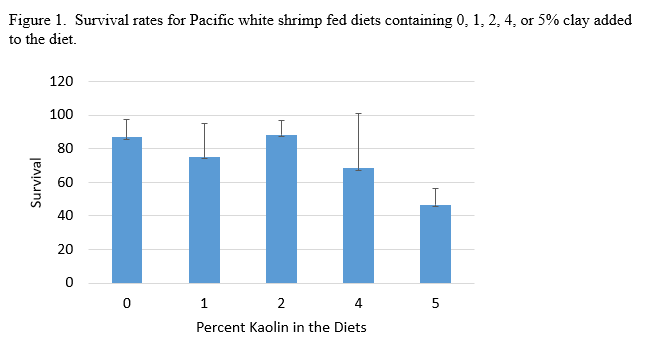USE OF A KAOLINIC CLAY IN DIETS OF PACIFIC WHITE SHRIMP Litopenaeus vannamei CULTURED IN LOW SALINITY WATER
Kaolin clays have been used in a variety of industries, including diets for animals. Kaolin clays have antimicrobial properties and there is limited information on the benefits in the diet of aquatic species. The use of clay minerals in shrimp has demonstrated increased retention time in the gut and improved growth and feed efficiency. A 6-week study was conducted to determine if Akuapro®, a kaolinic clay, added to the diets would increase growth, feed conversion, and immunological parameters in the Pacific white shrimp Litopenaeus vannamei. Twenty shrimp were stocked into 20 75-L aquaria that were part of a recirculation system consisting of a sand filter, biofilter and sump (3900 L total system volume). Salinity was maintained at 2.3 g/L using reconstituted seawater. Shrimp were fed one of five isocaloric, isonitrogenous diets (35% CP) containing 0, 1, 2, 4 or 5% clay added to the diet. No significant differences in shrimp growth, specific growth rate, or survival occurred with shrimp fed any of the diets. However, apparent survival was lowest in shrimp fed the 5% diet. Osmolality and immune parameters are being measured and will be reported.
